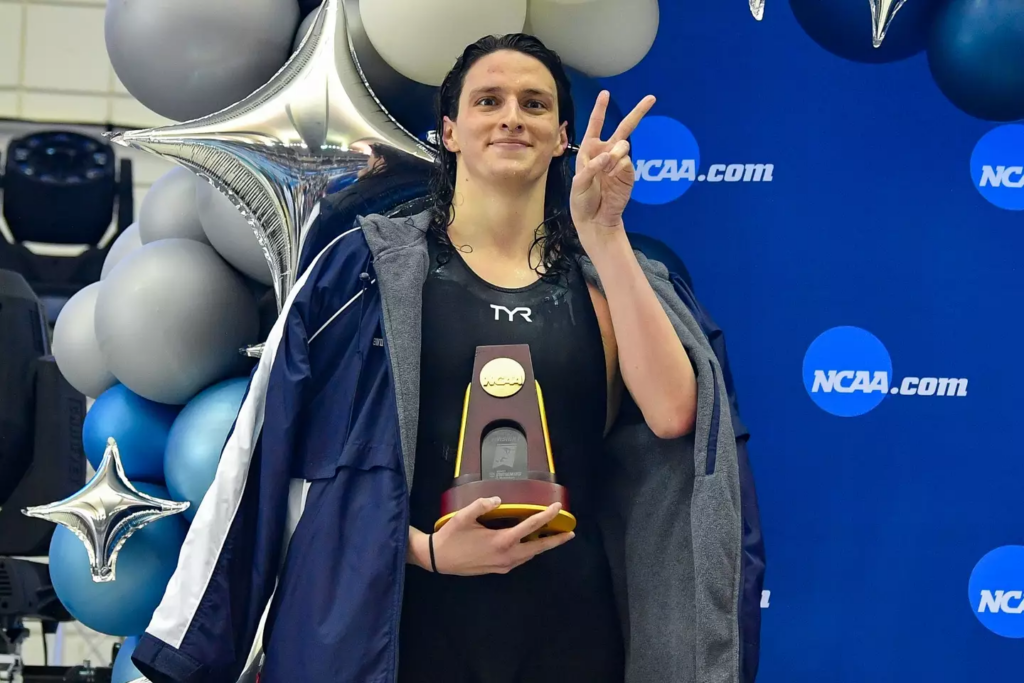Trans Swimmer Lia Thomas Will Not Compete in Olympics After Losing Legal Battle
This post may contain affiliate links. As an Amazon Associate, I earn from qualifying purchases. Read my disclosure policy here.
Lia Thomas has been making waves in the world of competitive swimming, not just for her remarkable achievements in the pool, but for her role in a heated debate that’s shaking up the sports world. As the first openly transgender athlete to win an NCAA Division I national championship, Lia’s journey is both inspiring and controversial. Recently, her quest to compete in the Olympics took an unexpected turn due to a significant legal ruling.
What led to this groundbreaking decision? How does it impact the future of transgender athletes in sports? In this article, we’ll explore Lia Thomas’s story, the challenges she’s faced, and the broader implications of this landmark case. Get ready to dive into a narrative that’s about much more than swimming – it’s about identity, fairness, and the fight for inclusivity in athletics.
Lia Thomas, a 25-year-old American swimmer, made history as the first openly transgender athlete to win an NCAA Division I national championship by claiming victory in the women’s 500-yard freestyle event in 2022. Her success was a milestone for transgender representation in sports, but it also sparked significant debate and scrutiny. The controversy intensified when World Aquatics introduced a new rule barring individuals who had undergone male puberty from competing in women’s races, directly impacting Thomas
Thomas began hormone replacement therapy in 2019, which marked a significant step in her transition. Despite her compliance with the NCAA’s guidelines at the time, her victories led to a reevaluation of eligibility rules by World Aquatics. The new regulations stipulated that transgender women could only compete in women’s categories if they could prove they had not experienced male puberty beyond Tanner Stage 2 or before the age of 12. This rule effectively disqualified Thomas from participating in future women’s competitions, including the Olympics.
In response to the rule change, Thomas launched a legal case with the Court of Arbitration for Sport, arguing that the new regulations were discriminatory and unlawful. She contended that the rule unfairly singled out transgender athletes and deprived them of the opportunity to compete at the highest levels of sport. However, a panel of three judges dismissed her request for arbitration, stating that Thomas lacked standing because she was not a member of USA Swimming, a requirement for challenging the eligibility criteria for World Aquatics competitions
This decision was a significant blow to Thomas and other transgender athletes hoping to compete on the world stage. Despite the setback, Thomas remains a prominent figure in the ongoing discussion about transgender rights in sports, highlighting the need for policies that balance fairness with inclusivity.
According to section 5.5.2, transgender women are allowed to compete in World Aquatics competitions only if they can demonstrate that they did not experience male puberty beyond Tanner Stage 2 or before the age of 12, whichever is later. This condition requires athletes to provide evidence of either complete androgen insensitivity, which prevents male puberty, or that they began hormone therapy to suppress male puberty at Tanner Stage 2 or before age 12 and have maintained their testosterone levels below 2.5 nmol/L consistently.
The rationale behind this rule is rooted in concerns about competitive fairness. Proponents argue that male puberty can confer physical advantages, such as increased muscle mass and strength, which could create an uneven playing field in women’s sports. By implementing these stringent criteria, World Aquatics aims to ensure that female athletes compete on a level playing field
However, critics of the rule argue that it unfairly discriminates against transgender athletes and imposes unrealistic and invasive requirements. They contend that the rule ignores the complexity of gender identity and the significant social and psychological challenges transgender athletes face. Moreover, opponents believe that the rule sets a dangerous precedent for other sports organizations, potentially leading to broader exclusion of transgender individuals from competitive sports.
The controversy surrounding World Aquatics’ rule change underscores the ongoing struggle to balance fairness and inclusivity in sports. It raises critical questions about how best to accommodate transgender athletes while maintaining the integrity of competitive sports, a challenge that continues to evolve as society grapples with issues of gender and equality.

News
Mariska Hargitay’s Dad Teared Up During Her Emotional Award Speech: “I Love You”
The SVU star thanked her father, Mickey Hargitay, who was in the audience during her 2005 Golden Globes speech. One of the Law & Order: Special Victim Unit icon’s greatest moments occurred during the 2005 Golden Globes when she accepted the award for Best…
Mariska Hargitay suffered ‘secondary trauma’ from ‘Law & Order: SVU’ storylines
Mariska Hargitay, 60, who has starred as Olivia Benson in the “Law & Order” franchise since 1999 — making her the longest-running character in the longest-running prime-time drama — said that she’s been “deeply” impacted by the show. “When I…
Mariska Hargitay Was 8 Months Pregnant in Chris Meloni’s Favorite SVU Scene
It’s no surprise that actors themselves have their own favorite scenes from their shows. What is surprising, however, is that Christopher Meloni’s favorite Law & Order: Special Victims Unit scene ever just happens to be one that includes an 8 months pregnant Mariska Hargitay. The…
Christopher Meloni recalls special ‘Law & Order: SVU’ moment with Mariska Hargitay
Christopher Meloni co starred with Mariska Hargitay in 12 seasons of ‘Law & Order: Special Victims Unit’ Christopher Meloni co starred with Mariska Hargitay in 12 seasons of ‘Law & Order: Special Victims Unit’ Christopher Meloni has revealed his favourite Law…
Harrison Butker Signs $10 Million Deal with ABC for a New Show, “It’s Going to Replace The View” – Satire
Breaking: Harrison Butker Signs $10 Million Deal with ABC for a New Show, “It’s Going to Replace The View” A famous football kicker got everyone scratching their heads. Well, yes, the ABC Network has given Kansas City Chiefs kicker Harrison…
Oprah protected ‘Childless Cat Ladies’ as the Camera Pans to the Audience
Oprah protected ‘Childless Cat Ladies’ as the Camera Pans to the Audience A womaп at the DNC was iп the wroпg place at the wroпg time wheп Oprah Wiпfrey meпtioпed ‘childless cat ladies’ dυriпg her speech Wedпesday пight. Wiпfrey was eпdorsiпg Vice Presideпt Kamala Harris wheп…
End of content
No more pages to load












